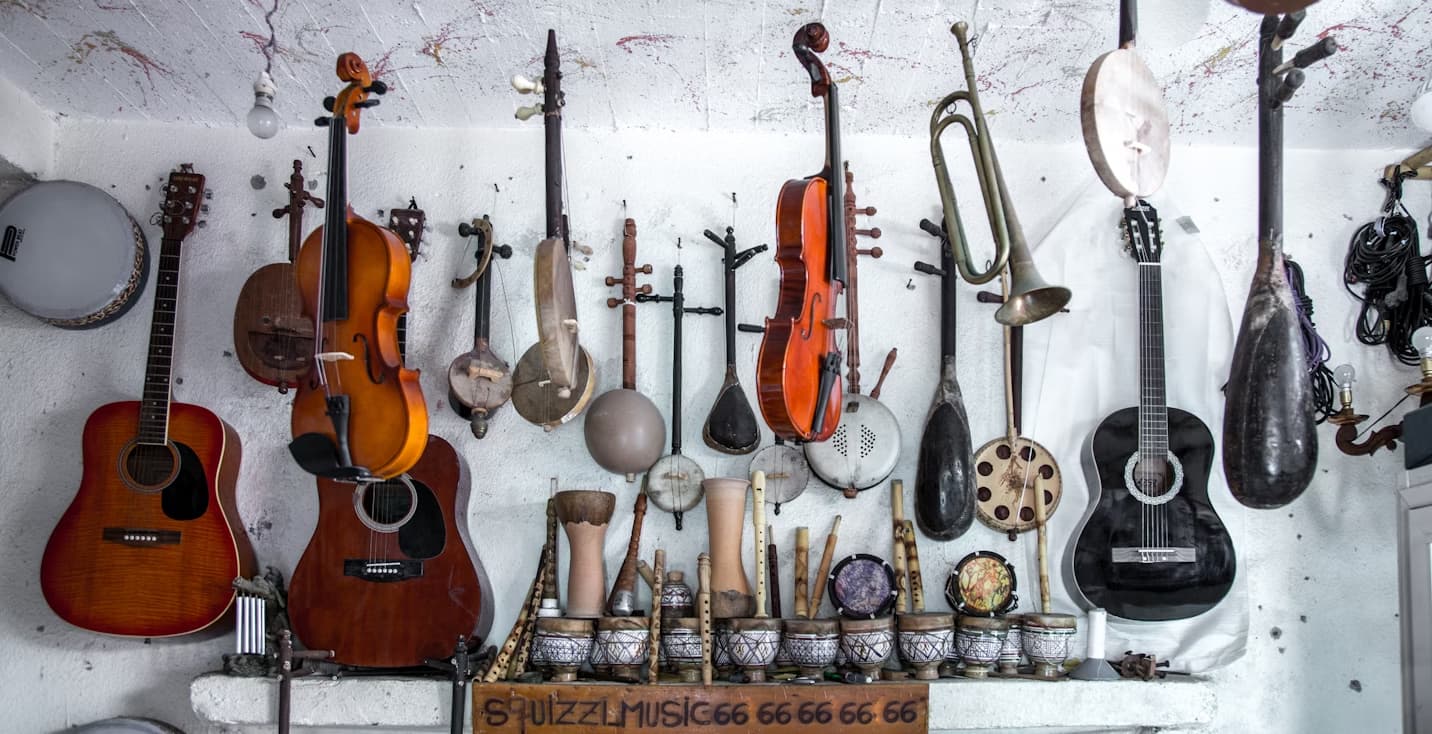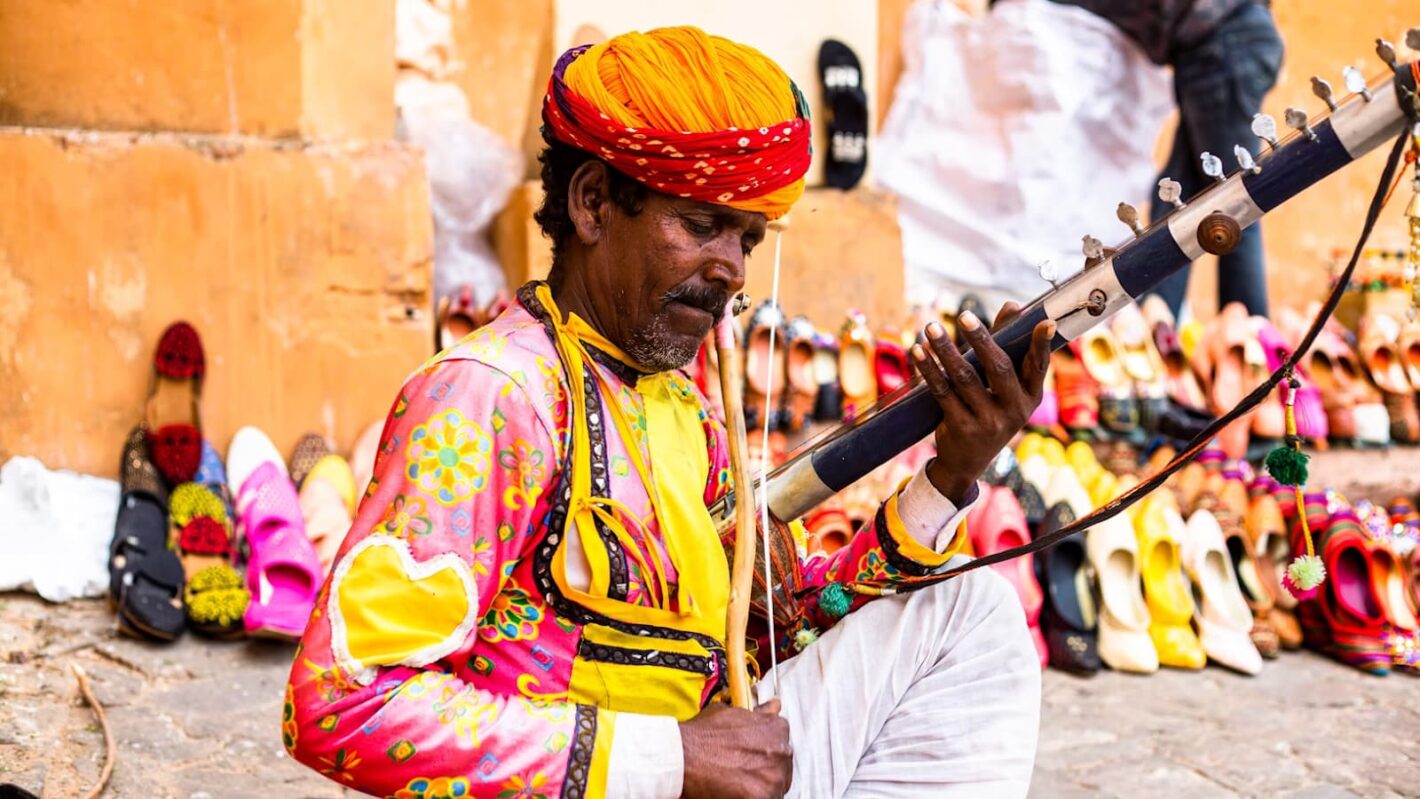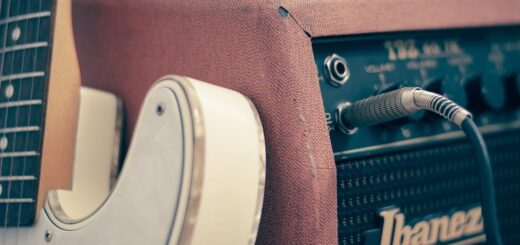Overlooked Musical Instruments from Across the Globe

For millennia, music has played an essential role in human life, reflecting the diverse emotions, creativity, and cultural heritages of various societies. Throughout history, countless musical instruments have been created; some have endured, while others have faded into history. These neglected instruments offer an intriguing insight into the musical advancements and cultural customs of earlier eras. Join us as we delve into the tales of some of the most intriguing yet largely overlooked musical instruments from around the globe.
Nyckelharpa (Sweden)
One of the most unique instruments from Scandinavia, the Nyckelharpa, is a traditional Swedish keyed fiddle. This string instrument has been around for more than six centuries and is often associated with Swedish folk music. The Nyckelharpa is played by bowing its strings while simultaneously pressing down keys to change the pitch, making it a hybrid between a violin and a hurdy-gurdy in terms of sound and function.
During the 17th and 18th centuries, the Nyckelharpa was quite popular in Sweden, especially for folk performances. However, the instrument gradually fell out of favor by the 19th century as other instruments became more prominent. Despite this decline, the Nyckelharpa has experienced a small revival in Scandinavian folk music in recent years, though it is still relatively unknown outside of Sweden, preserving its status as a largely forgotten instrument on the global stage.
Kamancheh (Persia)
The Kamancheh is a traditional Persian string instrument that has played a prominent role in Iranian classical music for hundreds of years. With its compact, round wooden body and elongated neck, this instrument delivers a deep, resonant tone that shares similarities with the modern violin, though its sound is more nasal in character. Played using a bow, performers rotate the neck while playing to fine-tune the pitch and tone.
The Kamancheh’s reach extended far beyond Persia, influencing music in regions such as Central Asia, Turkey, and the Caucasus, where it became a fixture in various local music styles. However, over time, instruments like the violin, which offered greater versatility, began to replace it in many genres, contributing to its reduced prominence. While the Kamancheh continues to be played in certain areas, especially in Iran and Azerbaijan, it has largely faded from widespread use, symbolizing a bygone era of musical tradition.
Crwth (Wales)
An ancient Welsh instrument, the Crwth, was widely used during the Middle Ages. It is a type of string instrument that can be both bowed and plucked, giving it a versatile sound. The Crwth features six strings and was primarily employed in folk music and storytelling, often accompanying singers or poets.
The instrument’s popularity waned by the 18th century, when more modern instruments like the violin began to take over the musical scene. Its dual playing style, with both bowing and plucking techniques, made it an unusual instrument, but this also contributed to its decline as simpler, more specialized instruments became the norm. Today, very few musicians continue to play the Crwth, and its use is largely confined to folk music revivals and historical reenactments.
Sarangi (India)
The Sarangi is an Indian string instrument with a haunting, voice-like quality that has long been associated with classical Indian music. Carved from a single piece of wood, it has three or four main strings and up to 35 sympathetic strings that vibrate to create a resonant, layered sound. The Sarangi was particularly favored for its ability to mimic the human voice, making it a popular accompaniment to vocal performances in Indian classical music.

Despite its significant role in Indian music during the 19th and early 20th centuries, the Sarangi’s popularity has dwindled. The instrument’s complex playing technique and the difficulty of mastering it have made it less appealing to newer generations of musicians. As a result, it has largely been replaced by instruments like the violin and the harmonium, though it still survives in some classical circles.
Viola da Gamba (Europe)
The Viola da Gamba, or viol, was a prominent instrument in European music from the Renaissance to the Baroque period. This fretted, bowed instrument came in various sizes, ranging from small treble viols to large bass viols. The Viola da Gamba was often used in consorts and chamber music and was prized for its ability to produce a soft, refined sound that blended well with other instruments.
By the 18th century, however, the viol fell out of favor as the more dynamic and versatile violin family took its place in orchestral and solo music. The violin’s louder, brighter sound was better suited to the evolving musical tastes of the time, leaving the Viola da Gamba to fade into obscurity. Today, it is primarily heard in performances of early music, but its once central role in European music is largely forgotten.
Damaru (India and Tibet)
The Damaru is a small two-headed drum with spiritual significance in India and Tibet. It is closely associated with religious rituals, particularly in Hinduism and Tibetan Buddhism. The drum is played by holding it in one hand and twisting it so that beads attached to the sides strike the drumheads, producing a rhythmic sound.
In Hinduism, the Damaru is often depicted in the hands of the god Shiva, symbolizing the sound of creation. While it continues to be used in spiritual practices, the Damaru is not commonly heard outside of these religious contexts, making it one of the lesser-known instruments from South Asia.
Shawm (Middle East and Europe)
The Shawm is a double-reed woodwind instrument that was widely used in medieval and Renaissance Europe. Originally from the Middle East, it made its way to Europe through trade and cultural exchanges, where it became a staple in outdoor and ceremonial music. The Shawm produces a loud, piercing sound due to its large bell and wide bore, making it ideal for public performances.
As music evolved and indoor performances became more common, the Shawm was gradually replaced by quieter, more refined instruments like the oboe. By the 18th century, the Shawm had largely disappeared from European music. Today, it is mostly found in historical music ensembles, its once-important role now a distant memory.
Hardanger Fiddle (Norway)
The Hardanger Fiddle, or Hardingfele, is a traditional Norwegian instrument that resembles a violin but has additional sympathetic strings, which vibrate beneath the main strings to produce a fuller, more resonant sound. It was particularly popular in rural Norway during the 18th and 19th centuries, where it was played at weddings, festivals, and other community gatherings.
The advent of modern instruments like the standard violin led to a decline in the Hardanger Fiddle’s popularity. Though it continues to be used in Norwegian folk music, the instrument has become largely unknown outside of Norway. It survives mainly in folk festivals and specialized musical circles, a shadow of its former prominence.

Aeolian Harp (Ancient Greece and Europe)
The Aeolian Harp, named after the Greek god of wind, Aeolus, is an instrument that plays itself. Designed to be placed outdoors, it consists of strings stretched across a wooden frame. When the wind passes over the strings, they produce soft, ethereal sounds that vary depending on the speed and direction of the wind.
The Aeolian Harp was popular in Ancient Greece and later found renewed interest during the Romantic period in Europe. However, it was more of a philosophical and artistic curiosity than a practical instrument. Its otherworldly sounds captured the imagination of poets and thinkers, but it never became a central part of any musical tradition, and today it remains largely forgotten.
Bombarde (Brittany, France)
The Bombarde is a small woodwind instrument native to the Brittany region of France. It has a loud, bright sound and is traditionally used in Breton folk music, especially during outdoor festivities and processions. Despite its small size, the Bombarde is capable of producing a sound powerful enough to carry over large distances, making it ideal for public performances.
The Bombarde has largely been confined to its cultural roots in Brittany, and while it remains an essential part of traditional Breton music, its use has dwindled over time. Today, it is rarely seen outside of specific regional festivals, and its presence in the global music landscape is minimal.


